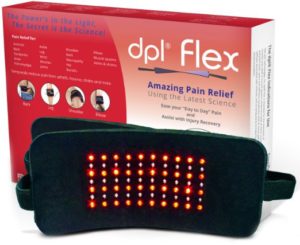The idea of losing a couple of pounds seem to be on pretty much everyone’s mind these days. Social media has blown up body image trends so much that everyone and their moms want to have a toned, fit looking body. More and more people have become serious about setting weight loss goals, but not everyone is lucky to achieve successful results. Dieting and exercise on a consistent basis is not only challenging but doesn’t work for everyone’s needs and sometimes doesn’t provide complete satisfaction for those who can take on the task.
If you happen to have stubborn body fat in places like your tummy, back, the inner parts of your thighs or even on your face and chin area then red light therapy might be the solution you are looking for.
How Does Red Light Therapy Work to Reduce Fat?
There is still a lot of doubt among researchers that red light therapy has any effect on reducing fat in the body. There hasn’t been any tangible proof that its application works for this purpose, but scientists are optimistic that there are modifications in its treatment that can be made in the future. There are also suggestions that claim red light therapy need longer exposure and therapeutic time to have detectable effects on reducing fat.
What we do know is that studies show red light combined with near-infrared light can stimulate the release of lipids from fat cells within the body to consequently achieve weight loss.
In this process of combining the two lights, red light waves penetrate the skin about 5 millimeters below the surface to bypasses the outermost level of the epidermis to directly target and stimulate the mitochondria of the cell to increase the production of cellular energy. Then near infrared waves interact with the skin, so that the body tissue absorbs the light. When this happens, water molecules are broken up to release toxins and fats.
In other words, red and near Infrared light waves travels to the fat cells in our body, these specific cells are called adipocytes, which are known to store fat. Once they do, their combined efforts cause the toxin and fats to disperse and eventually exit the body through perspiration.
Another thing to note, is the tissue and cells of the body absorb both these light waves between the outliers of 600 and 1000 nanometers to tackle fat, not every wavelength that occurs between these outliers has been proven effective to achieve these results.
Reducing Hunger Levels with RLT
Perhaps the most popular medical solution someone thinks of to reduce hunger levels is undergoing lap band or gastric bypass surgery. This is quite a dramatic and risky approach to shedding a few pounds. Now with conclusive research, it is shown that red light therapy can indeed diminish the urge to eat.
The International Journal of Endocrinology in 2012 released a study that suggested red light could control the hunger hormones in your body, namely leptin and ghrelin, and doing so to manage your weight [2].
Leptin is the hormone that decreases your appetite, while ghrelin does the opposite by increasing appetite. By systematically controlling these hormones, you can control your eating habit in such a way to prevent the body from gaining fat. This is a healthy, non-invasive approach to control and maintain your weight, especially after you have lost a couple of pounds
How RLT Reduces Cellulite & Firms the Skin
The effects of red and near infrared light therapy also aids in weight loss by diminishing fat pockets that produce cellulite on the surface of the skin. Cellulite develops from a buildup of a combination of unhealthy collagen and elastin as well as excess fat in the skin layers.
Red light therapy replenishes collagen production by increasing the fibroblast growth factor. Not only are fibroblasts responsible for the production of collagen but it also increases its movement through the cellular walls, which ultimately tightens the skin. Firming your skin while losing weight goes hand in hand to achieve the best-looking results and for that reason, red light therapy is a key aspect for the weight loss process.
Another way red and infrared light therapy combats cellulite is by supporting blood circulation and blood vessel health in the areas of the body they develop. One of the contributing factors of emerging cellulite on the skin has to do with poor blood circulation, this reduces the diffusion of essential nutrients thus weaken the skin’s connective tissue.
More Evidence: Clinical Research that shows how Red Light Therapy Reduces Fat and Helps with Weight Management
Experiments have concluded that red light therapy along with exercise gives you quicker results. In a clinical study in 2011 on red light therapy and cellulite reduction, two sets of woman ranging in ages 25-55 were given the task of cardio intensive exercise with subsequent red light therapy vs. cardio intensive exercise only, two times a week. The examiners used thermo-graphic images to show that after a few weeks there were significant changes in body measurements of the thigh areas and noticeably cellulite lessening on the set of women who exercised and did red light therapy after, opposed to those who exercised only [3].
In 2018, a study was done for the NIH, U.S. National Library of Medicine found results that showed how the effect of red light therapy achieved fat loss and body contouring. The study suggested that red light therapy administered at 650 nanometers caused lipolysis, i.e. the breakdown of lipids/fats in subcutaneous fat in the body [1].
A study published in 2009 by Lasers in Surgery Medicine showed that participants who received light therapy achieved a significant reduction in overall circumference on several parts of the body [5]. This simply concluded that light therapy, when targeted on specific body parts, will reduce the circumferential area of those regions.
Another study by Lasers in Surgery Medicine in 2013 found that red light therapy administered at 635 nanometers was able to reduce the size and contour the hips, thighs, and waistline of the participants. On the completion of the trial, researchers found a mean loss of 2.99 inches in the overall body size [6].
The Journal of Obesity Surgery in 2011 did a study on red light therapy for body contouring. In its findings, participants saw a significant reduction in waistline girth after 4 weeks, where red light therapy was administered at 635-680 nanometers [4].
Conclusion: Why you should Consider Red Light Therapy for Fat Loss and Weight Management
We can officially say red light therapy and its synthesis with near infrared light therapy diminishes fat cells ingeniously from the inside out.
Nowadays you can get your own red light therapy device, which will help you to manage and control exposure time and focus on the areas that you would like to achieve fat loss to ultimately achieve the results you want. It also saves money in the long run rather than going to a beauty salon.
We can conclude that clinical research and the accounts of many experts shows red and infrared light therapy is a natural, safe, non-invasive and pain-free alternative to losing fat compared to undergoing surgery among other types of laser treatment, which comes with unwanted side effects. For that reason, red light therapy should be one of the first considerations for fast loss and weight management.
Research Sources:
1. Effects of Red Light LED Therapy on Body Contouring 2018, NIH, U.S. National Library of Medicine,
2. Figueiro MG, Plitnick B, and Rea MS. Light Modulates Leptin and Ghrelin in Sleep-Restricted Adults. International Journal of Endocrinology. 2012.
3. Paolillo FR, Borghi-Silva A, et al. New treatment of cellulite with infrared-LED illumination applied during high-intensity treadmill training. J Cosmet Laser Ther. 2011 Aug;13(4):166-71.
4. Caruso-Davis MK, Guillot TS, Podichetty VK, Mashtalir N, Dhurandhar NV, Dubuisson O, Yu Y. Efficacy of low-level laser therapy for body contouring and spot fat reduction. Obes Surg. 2011. Jun;21(6):722-9.
5. Jackson RF, Dedo DD, Roche GC, et al. Low-level laser therapy as a non-invasive approach for body contouring: a randomized, controlled study. Lasers in Surgery and Medicine. Dec 2009;41(10):99-809.
6. McRae E and Boris J. Independent evaluation of low-level laser therapy at 635 nm for non-invasive body contouring of the waist, hips, and thighs. Lasers in Surgery and Medicine. Jan 2013;45(1):1-7.





